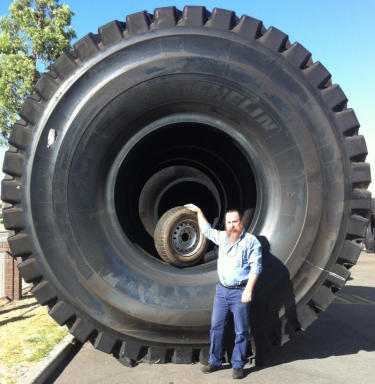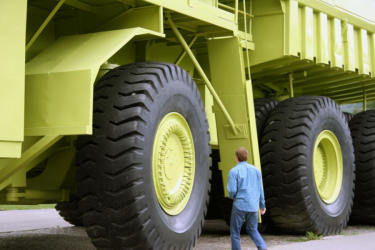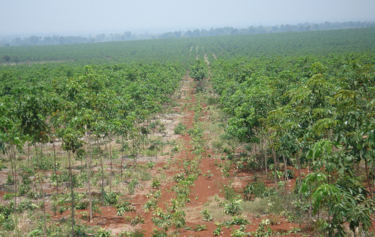Without Rubber, the Machines Stop

No rubber, no tires
A deliberate act of biological terrorism so simple it could be perpetrated by your grandmother could precipitate an economic crisis of unprecedented dimensions. — Preface to One River by Wade Davis1
A single errant spore of South American Leaf Blight reaching Southeast Asia could bring the automobile age to a screeching halt. — “Why We (Still) Can’t Live Without Rubber” by Charles Mann2
Planes will continue to land for a while, until their tires wear. Airlines will have to make a choice between using unsafe old rubber and grounding planes. New cars will be built, but eventually the natural rubber necessary for sidewalls will be too expensive. Roads will eventually go quiet. — Never Out of Season by Rob Dunn3
Dunn, in chapter 12 of his condemnation of undiversified crops, labels this scenario dystopian, but to many it sounds wonderful. This outcome is inevitable so long as globalized air travel and freight continues, and it could come sooner than later if someone purposely transports the wrong leaves. (Or the right leaves, if you find his scenario not dystopian, but desirable.) Dunn explains:
Leaf blight will arrive in Asia at some point. How will it come? The spores of the fungus are thin and so don’t do well on extended travel, such as on boats, but they’d do fine on a plane. […] As a 2012 study4 notes, “The pathogen can be easily isolated from infected rubber trees…and transported undetected across borders,” which is to say that the intentional destruction of the majority of the world’s rubber supply would be easy […] It would be easy because the trees are planted densely; because most of the plantations are relatively close together; because the trees are genetically very similar to each other. It would be easy because the trees in Malaysia have not been selected for resistance; they have been selected for productivity. Planters chose trees with lots of latex, favoring short-term benefit over long-term security.
Scholars express concern about whether terrorists might have the technology necessary to spread leaf blight to Asia. Do they have the specialized knowledge necessary to transport and propagate fungal spores, the specialized knowledge necessary to destroy the world’s supply of rubber? Of course they do, because all it would really take is a pocket full of infected leaves.5
Natural rubber sources
Natural rubber is processed from latex extracted from the tree Hevea brasiliensis. Native to Brazil, the tree is highly susceptible to the co-evolved South American Leaf Blight6, which wiped out every attempt to establish rubber plantations in the region.2 Dense plantations became possible only after humans ferried the seeds to Asia on boat rides too long for blight fungal spores to survive. This release from predation allowed breeding of cultivars for maximum latex production. 90% of natural rubber now comes from huge monocrops of identical clones in Asian plantations, predominantly from Thailand, Indonesia, Viet Nam, India, China, and Malaysia.7 8
To this day a single act of biological terrorism, the systematic introduction of fungal spores so small as to be readily concealed in a shoe, could wipe out the plantations, shutting down production of natural rubber for at least a decade. It is difficult to think of any other raw material that is as vital and vulnerable.1
Even without deliberate infection of vulnerable young leaves, arrival of the leaf blight is inevitable in time. Meanwhile, rubber leaf diseases such as Fusicoccum leaf fall, already present in Asia, threaten productivity if their ranges expand within the region—and with similar symptoms, their presence complicates early detection of leaf blight. Some Asian countries do take precautions against leaf blight introduction by air cargo and passengers from infested South American countries. But many have no screening at all; those which do don’t screen traffic which hopped through non-blight countries7; and no screening systems are foolproof—especially against antagonists seeking to subvert them.
Once the blight hits, a mitigation program of breeding, propagating and planting resistant varieties will take at least a decade before new Asian plantations mature to the point of harvest. Even then, yields will remain lower than they are now, since the new cultivars will trade some of their copious latex flow for blight resistance.
Natural rubber and fossil fuels
Though petroleum-derived synthetics can be mixed with or substitute for natural rubber in many applications, more than 40% of global rubber used is still natural.2 Despite 80 years of research and development, synthetic rubber remains inferior to natural rubber in resilience and tensile strength, resistance to abrasion and impact, and capacity to absorb impact without generating heat. To the extent that a natural rubber shortage forces further substitution with synthetics, the increased cost or decreased quality of rubber-dependent products will constrain global industrial activity and thus decrease fossil fuel use.

No rubber, no mining
Most significantly, tires require natural rubber, consuming 70% of annual production. Aircraft tires and huge off-the-road tires (OTRs) used for construction and mining vehicles require nearly 100% natural rubber. Tires for cars, pickups, and trucks can make more use of synthetics, but still require the stronger natural rubber for 40-75% of their rubber content.
When Japan cut the United States off from Asian rubber supplies during World War II, the US promptly imposed a 35 mph speed limit to reduce wear and tear on tires (reducing gasoline consumption as a side effect) and halted manufacture of domestic cars and trucks.1 If latex flows dry up today, so too will the global streams of cars, trucks, planes, mining equipment, and the fossil fuels with which they’re codependent. That’s a future to hope for.
Further reading
-
One River: Explorations and Discoveries in the Amazon Rainforest by Wade Davis, 1996. Chapter 11 is most relevant to this topic. ↩︎ ↩︎ ↩︎
-
Mann, Charles. Why We (Still) Can’t Live Without Rubber, National Geographic January 2016. ↩︎ ↩︎ ↩︎
-
Never Out of Season by Rob Dunn, 2017. Chapter 12 is most relevant to this topic. ↩︎
-
Onokpise, Oghenekome; Louime, Clifford. The Potential of the South American Leaf Blight as a Biological Agent. Sustainability 2012, 4. ↩︎
-
Kheng Hoy Chee, “Management of South American Leaf Blight,” The Planter 56 (1980), 314-25. ↩︎
-
Guyot, Jean; Le Guen, Vincent. A Review of a Century of Studies on South American Leaf Blight of the Rubber Tree. Plant Disease 2018, Vol. 102 No. 6. ↩︎
-
Pest Risk Analysis for South American Leaf Blight of Rubber, July 2007. ↩︎ ↩︎
-
The Leading Natural Rubber Producing Countries In The World, 2013 data. ↩︎
Consider supporting our work by joining our mailing list below, sharing & "liking" this page, and following us on social media. You may freely republish this Creative Commons licensed article with attribution and a link to the original.
